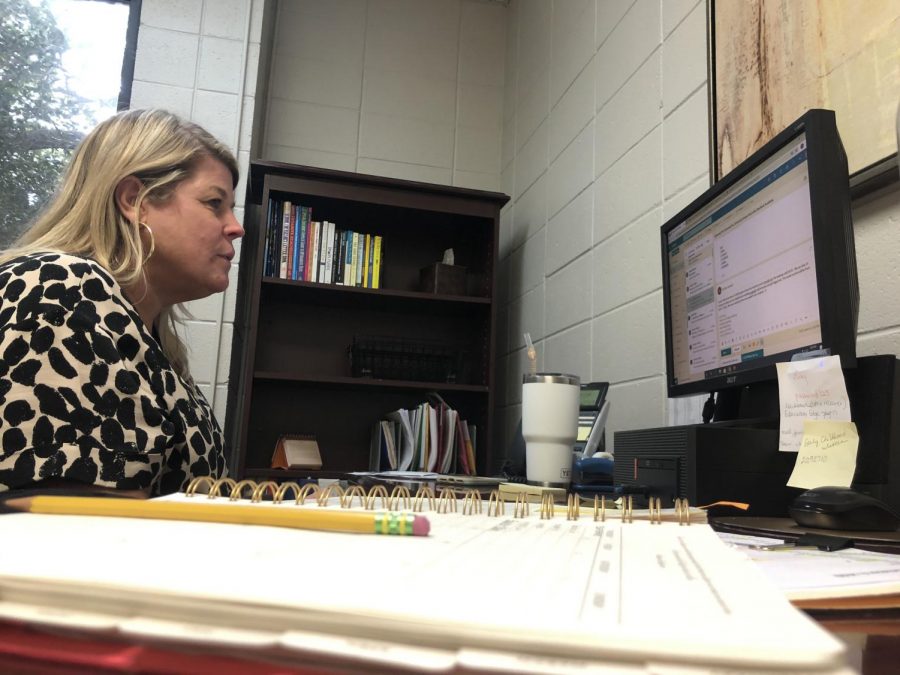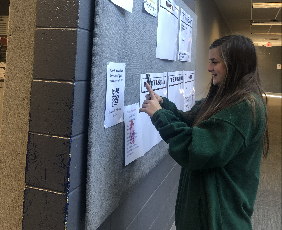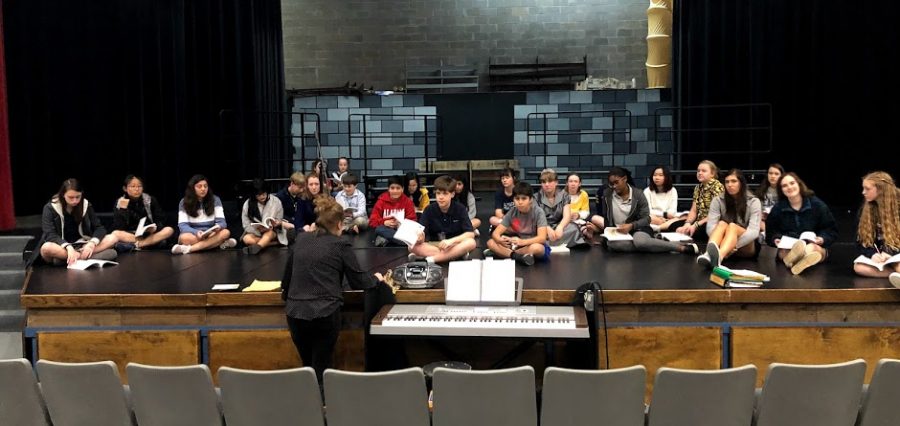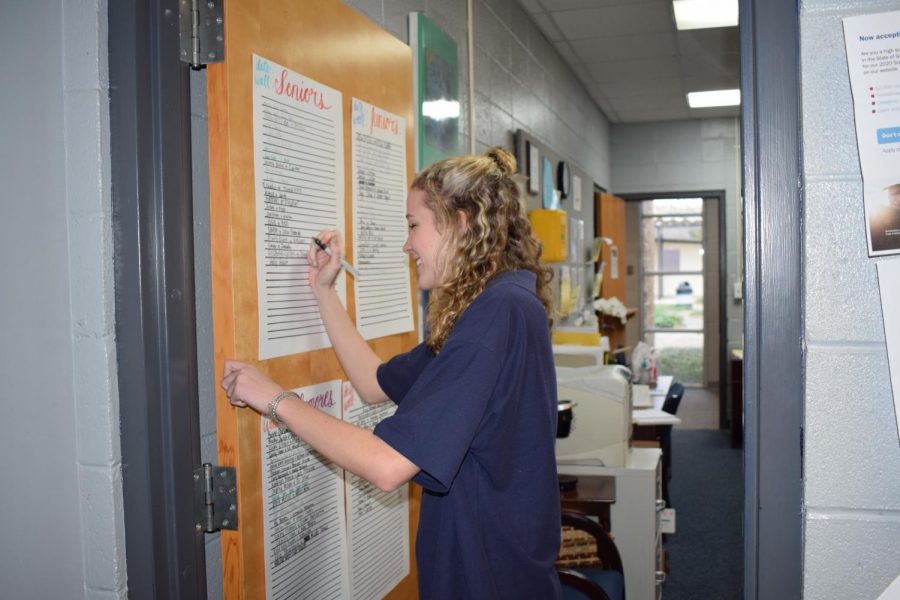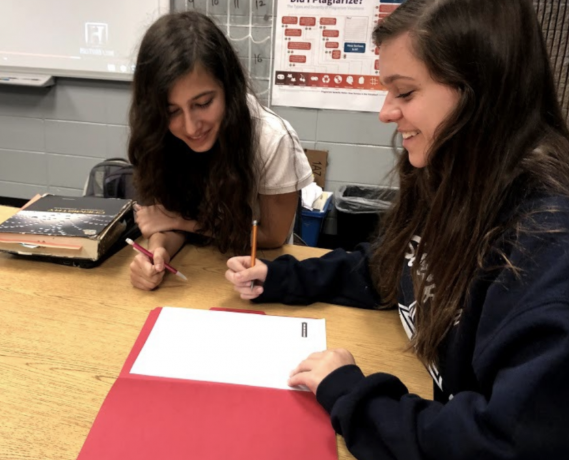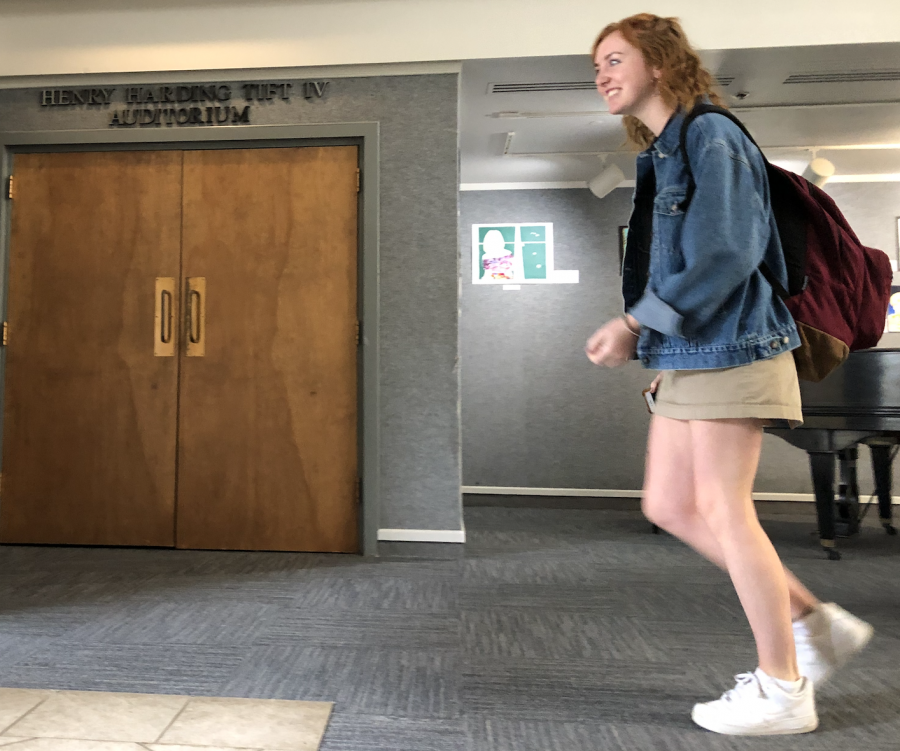https://youtu.be/VjORzFh98IM
By DYLAN QUINTAL, Gazebo Staff
By now, Stratford students have probably noticed the newly placed bucket near the cafeteria trash cans. Accompanied by a corresponding sign which reads, “Put Fruit + Veggie Waste Here,” this bucket is often toted by one or more classmates at the end of lunchtime when traffic is highest.
Students may also recall the announcement during Monday morning assembly a few weeks back that these classmates — members of the fledgling Environmental Design class — would begin collecting food waste every day at lunch to be used in their recently completed organic garden.
Perhaps a few people have even noticed the garden itself. On your way out of Loop Road, if you look to your right as you pass the Science Building, it’s hard to miss: three trees connected by a low triangle of bricks, the very foundation of this progressive project.
But where did it come from? How did this garden just appear, seemingly overnight?
To answer these questions, I went to speak with seniors Sachin Khurana and Shishir Bandi, two members of the Environmental Design class. They played an integral part in conceiving, proposing, and implementing the plans for the compost garden. Below is a condensed transcript of my interview with them.
Dylan Quintal: Go ahead and tell me how the idea came about.
Shishir Bandi: In Environmental Design, the end goal of the class was to come up with a project either in design or in designing something for the environment. So at the beginning we had kind of messed around with the idea of making a garden.
Sachin Khurana: I think Ann Thompson and Savannah Joyner really wanted to do a garden, and Shishir and I really liked the design portion of it, to kind of customize it and make it efficient and livable. So we probably came up with it in, what, December?
SB: Yeah.
SK: Found the location we wanted, met with people in December, mainly Dr. (Robert) Veto and (Jeff) Treadway, to get permission for that place by the Science Building. It was pretty hard to get permission granted.
SB: At first, we needed to get them to not spray pesticides in that area.
SK: To make it organic.
SB: We were told “no” in the beginning, but Dr. Veto liked the idea, so…
SK: We wanted to start digging and get stuff planted for the winter crops, but we didn’t get approval til February, so that didn’t happen.
DQ: Can y’all just tell me generally about what it’s going to be doing and what plans you have for it?
SK: You’re required to spend 40 hours on this project, so we’ve already done 30. And the first thing we did was to dig out the whole garden bed. It’s roughly 17 by 17 by 18 feet — triangle. Then we moved half of the clay/soil that was in there and then filled it with regular soil that we got, and we tilled it together, we mixed it up. Then we put another layer—then we put newspapers down, then cardboard, then a layer of leaves, and then we put composted soil on top of it. And so we planted cilantro, cucumbers, mixed greens, and radishes.
DQ: Very cool.
SK: And so all these should grow in probably four to six weeks — with the heat, if it remains hot. So, I mean, hopefully, if they grow well, we can use them in the school cafeteria.
DQ: So what kind of legacy do you think that this is leaving behind, in terms of the impact we’re having at Stratford and on Stratford’s place in the community?
SK: Well I think the Ecology Club and the Environmental Design class for sure can sustain this thing. I think it’s a good sign that Stratford’s kind of going green, a little bit, and there’s a lot of land at Stratford that can be turned into something like this. So I think it’s just the start, especially with the compost, so we’re saving some more vegetables and fruits that we would have thrown away and putting back into the stuff we eat.
SB: Yeah, and since our group in the Environmental Design class is just seniors, this is kind of a project that’s gonna be left behind for, you know—
SK: Anyone.
SB: More people to take on and kind of just pass down. That was the idea behind it.
DQ: So how do you know that, like, how are you gonna make sure that it gets passed down?
SB: While we were working on it, we teamed up with Mrs. (Theresa) Ferrari and Aaron Arnold of the Ecology Club. Mrs. Ferrari was particularly excited about it.
SK: This summer, we’ll probably all share the burden of watering it and maintaining it, but the next school year, when we’re all gone, I think she’s gonna organize a system to where the Ecology Club keeps up with it. I’d really hate to see it just go to waste.
SB: Yeah.
SK: So, I mean, we need to figure that out. More details about that.
DQ: Yeah! But so far, it’s looked pretty good, and it’s definitely gonna, I think, make a lasting impression on the school.
SK: Right. I mean, I think we need to expand it some more. We’re trying to maybe get some irrigation pump to make it natural.
DQ: Oh cool! With drip irrigation, kinda?
SK: Maybe we can get an aqueduct from the top of the hill, the softball field, maybe get it to flow down and just so we won’t have to use any hose. That’s one idea. Maybe get a hanging garden with grapevines because we have three trees around it.
DQ: Make a little paradise on Earth?
SK: I mean, if you’ve got an idea, anything can happen.
In the time since this interview, the garden went through a small crisis. As Sachin explained to me, the Environmental Design class was first given permission to build their garden behind the Science Building in an area where they wouldn’t have to worry about hitting any sprinklers while digging. Nevertheless, the students did come across a buried sprinkler head that didn’t seem to be connected anywhere. Assuming that nothing was wrong, they got rid of the sprinkler head and continued digging.
Last week, when the grounds staff turned on the sprinkler system, the garden was suddenly completely flooded. It seems the students did, in fact, hit a water line when they dug up that sprinkler head. At press time, the waters have receded, but for a while, Stratford’s new garden became Stratford’s new pond.
Sachin was also kind enough to send me the series of pictures below and further information about the group. The Environmental Design class, supervised by Ms. Susan Hanberry, consists of seniors Shishir Bandi, Libby Ellison, Tanisha Ghosh, Savannah Joyner, Sachin Khurana, and Ann Thompson, with special thanks to seniors Felton Hatcher and Ramsie Whitworth for their help. The garden itself is surrounded by a wall of 252 individual bricks laid by hand.


















